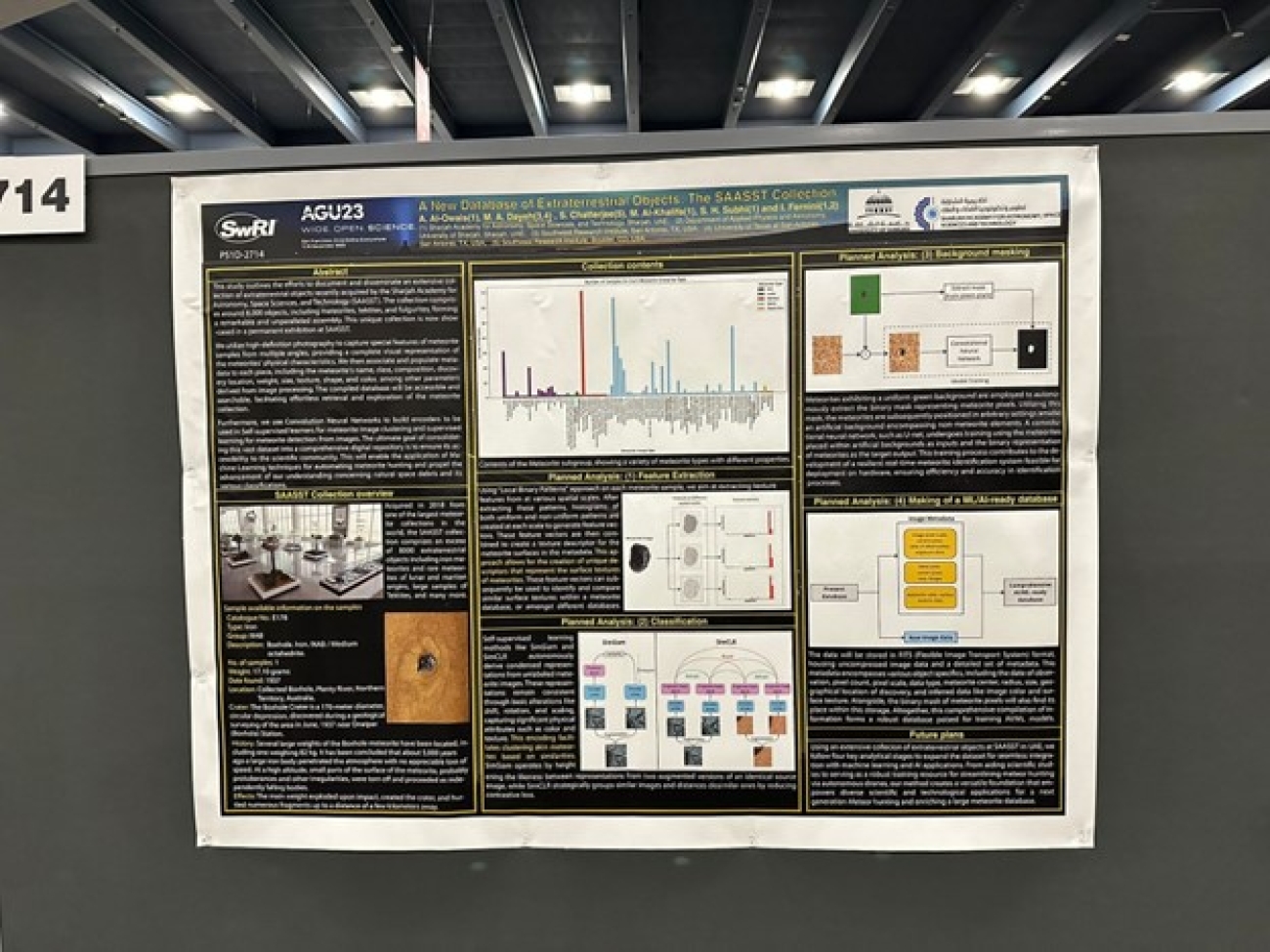This endeavor represents a concerted effort between SAASST's Meteorite Center and its Space Artificial Intelligence Laboratory, alongside the collaborative expertise of the Southwest Research Institute in San Antonio, Texas.
The genesis of this joint venture traces back to the Committee on Space Research (COSPAR) 2022 in Greece, where SAASST's presentation of several seminal posters garnered significant attention. This project underscored the synergy between traditional space sciences and the flourishing field of artificial intelligence. It featured the integration of SAASST's extensive meteorite collection with cutting-edge image processing and machine-learning techniques to create a comprehensive, searchable database of extraterrestrial objects.
Central to our analysis is applying Local Binary Patterns (LBP) to each meteorite sample, a technique poised to extract texture features at various spatial scales. These extracted feature vectors form a detailed texture descriptor that enriches the metadata associated with each meteorite. Such descriptors are pivotal in distinguishing similar surface textures within our database and facilitating comparative analysis across different collections.
Our approach leverages self-supervised learning methods, such as SiamSiam and SimCLR, to generate condensed image representations from unlabeled data, effectively clustering meteorites based on textural similarities. Subsequently, a convolutional neural network (CNN) is calibrated to forge a robust, real-time meteorite identification system for deployment on hardware platforms. This innovation promises to deliver unprecedented efficiency and accuracy in meteorite identification.
The assembled data, encapsulated in the Flexible Image Transport System (FITS) format, combines high-resolution images with an extensive metadata set, constructing a formidable database ready to train advanced Machine Learning algorithms. Ultimately, this project would make a versatile foundation that empowers diverse scientific and technological applications for the next generation of meteorite hunting and enriches a large meteorite database.
The title of the poster was:
"A New Database of Extraterrestrial Objects: The SAASST Collection," Aisha Al-Owais, Maher Dayeh, S. Chatterjee, Munya Al-Khalifa, Salma Subhi, Ilias Fernini



